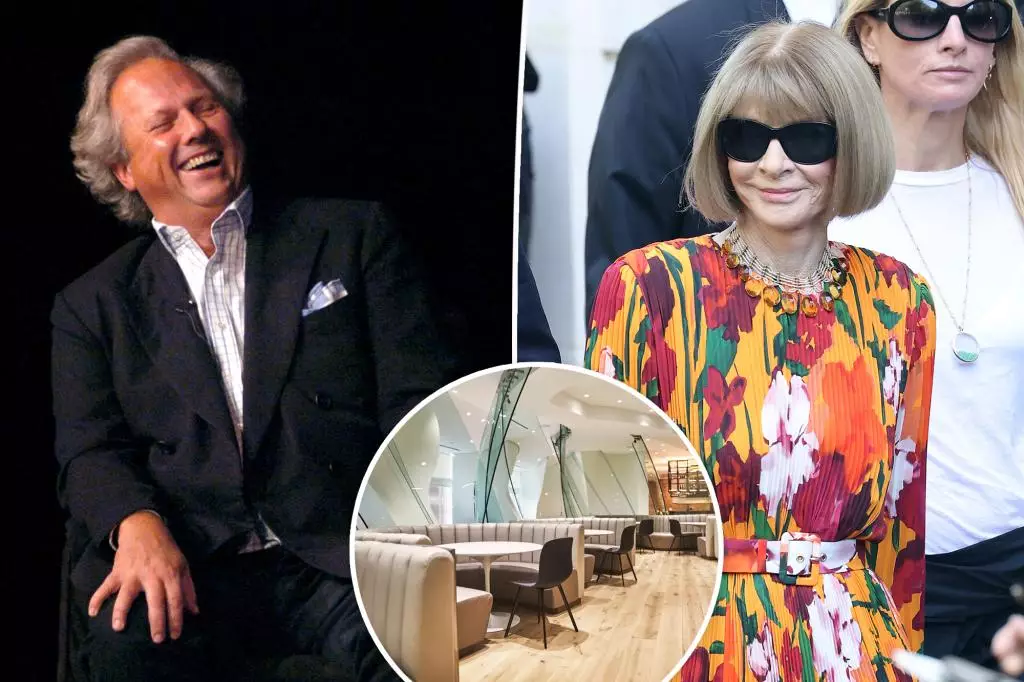Condé Nast’s cafeteria in Times Square was never merely a place to grab a meal; it was an institution that embodied the allure and status of the publishing giant itself. Designed by Frank Gehry, this opulent space served as a backdrop for industry gossip, secret deals, and the kind of socializing that fueled the culture of elite journalism. For years, this mythical cafeteria exemplified the fusion of luxury, modernity, and exclusivity that Condé Nast cultivated. Its innovative design, featuring titanium panels and distorted mirrors, was a physical manifestation of the company’s desire to project an image of avant-garde sophistication. It was more than a dining area—it was a display of corporate power, a symbol of the company’s unwavering commitment to aesthetic excellence, and a place where the lines between work and high society blurred.
Exclusivity and the Cult of Celebrity
The cafeteria’s reputation extended beyond its architecture. Industry giants such as Anna Wintour, Graydon Carter, and Grace Coddington were regular patrons, and their mere presence added to the mythos of the space. The cafeteria became a social hub for titans of fashion, media, and Hollywood, reinforcing Condé Nast’s position at the pinnacle of cultural influence. The lines of limousines that often queued outside exemplified the sense of privilege that permeated the environment. Every visit was a power move: a subtle reminder that this was a domain reserved for the influential and the elite. Gehry’s design choices, including the distorted mirrors, subtly reinforced the notion that this was a place where appearances mattered—both in fashion and in influence.
The Shift and the Resurrection of the Myth
After Condé Nast’s move to One World Trade in 2011 and the eventual repurposing of Gehry’s cafeteria as a legal firm’s cafeteria in 2017, the myth of that space seemed to fade. Yet, the upcoming return of Condé Nast editors to the old cafeteria, this time for the launch of Michael M. Grynbaum’s new book, signifies an effort to reconnect with that legendary aura. It reveals a hunger, perhaps even a nostalgic longing, to reconnect with a time when the company’s cultural cachet was palpable in every corner of its physical space. This act of returning is more than a simple gathering; it is an assertion of legacy—an attempt to reaffirm the myth of power and influence that the space once symbolized.
Gehry’s Vision as a Reflection of Corporate Ambition
Frank Gehry’s design was a bold statement of corporate innovation. His avant-garde approach, with flowing titanium panels and immersive reflections, was not just about aesthetics—it was about making a statement of superiority. Condé Nast was willing to spend millions to realize Gehry’s vision because it understood the power of environment in shaping perceptions. It was a deliberate move to turn an ordinary cafeteria into a space that radiated exclusivity, creativity, and cutting-edge style, aligning the physical environment with the brand’s lofty ambitions. Garlic banned from the kitchen and the use of luxurious materials underscored the company’s attention to detail and control—a reflection of its high standards and the importance of maintaining an image that attracts and retains the crème de la crème.
Reflections on the Myth and Reality
While some might view Gehry’s cafeteria as merely a luxury indulgence, it’s more accurate to see it as a symbol of the era’s corporate culture—one that prioritized spectacle, branding, and exclusivity. The space’s all-consuming aesthetics and the stories they sparked continue to influence perceptions of media elites. The upcoming return signals a desire to resurrect that myth, consciously or unconsciously, as a way of affirming Condé Nast’s continued relevance. It acts as a reminder that in the world of high society and media, physical spaces are much more than functional—they are carefully curated symbols of influence, and their significance often outlast their original purpose.

